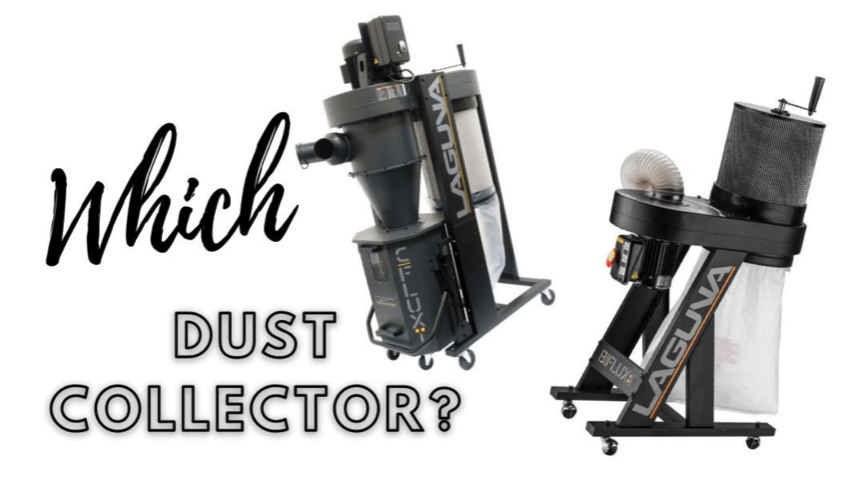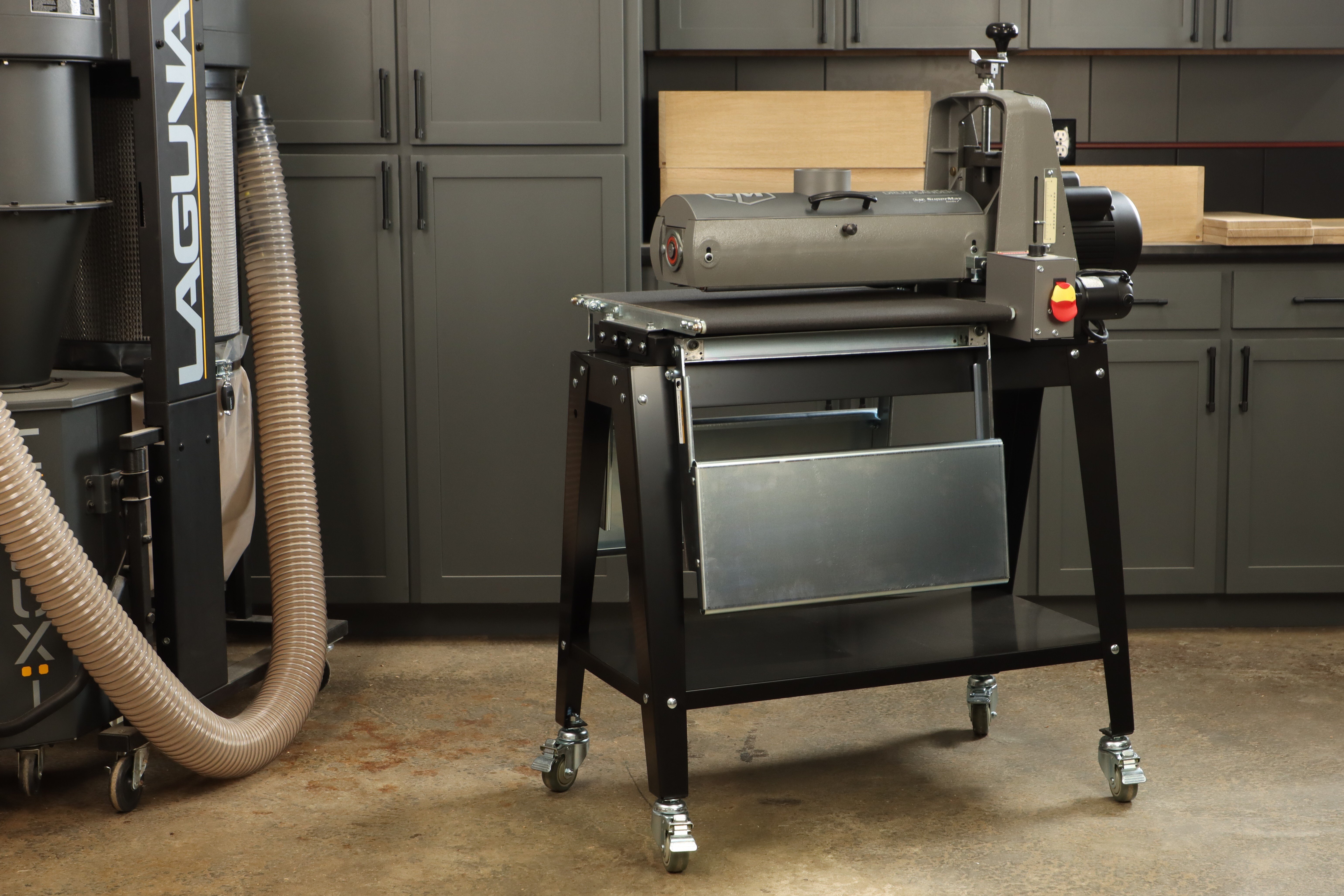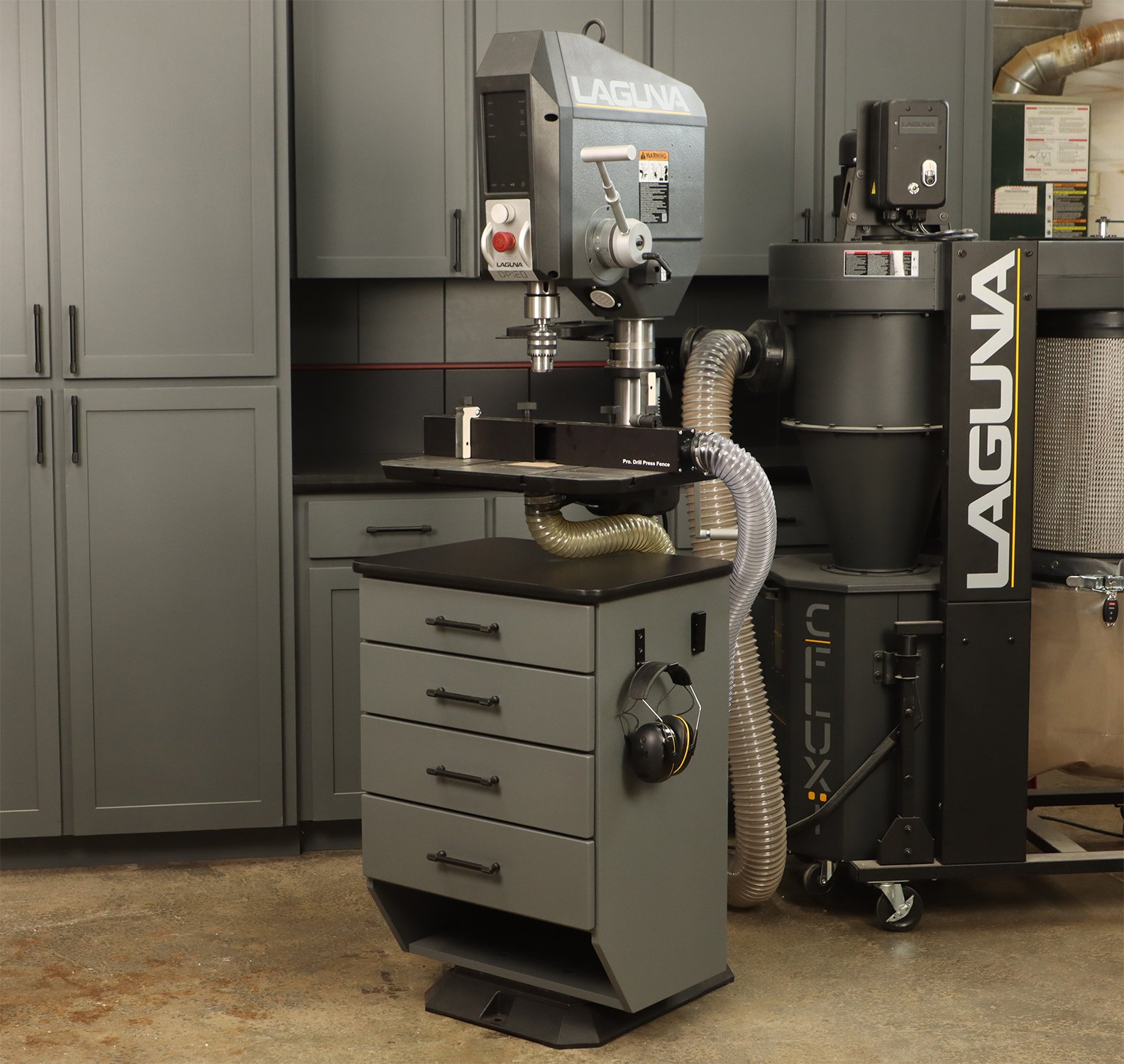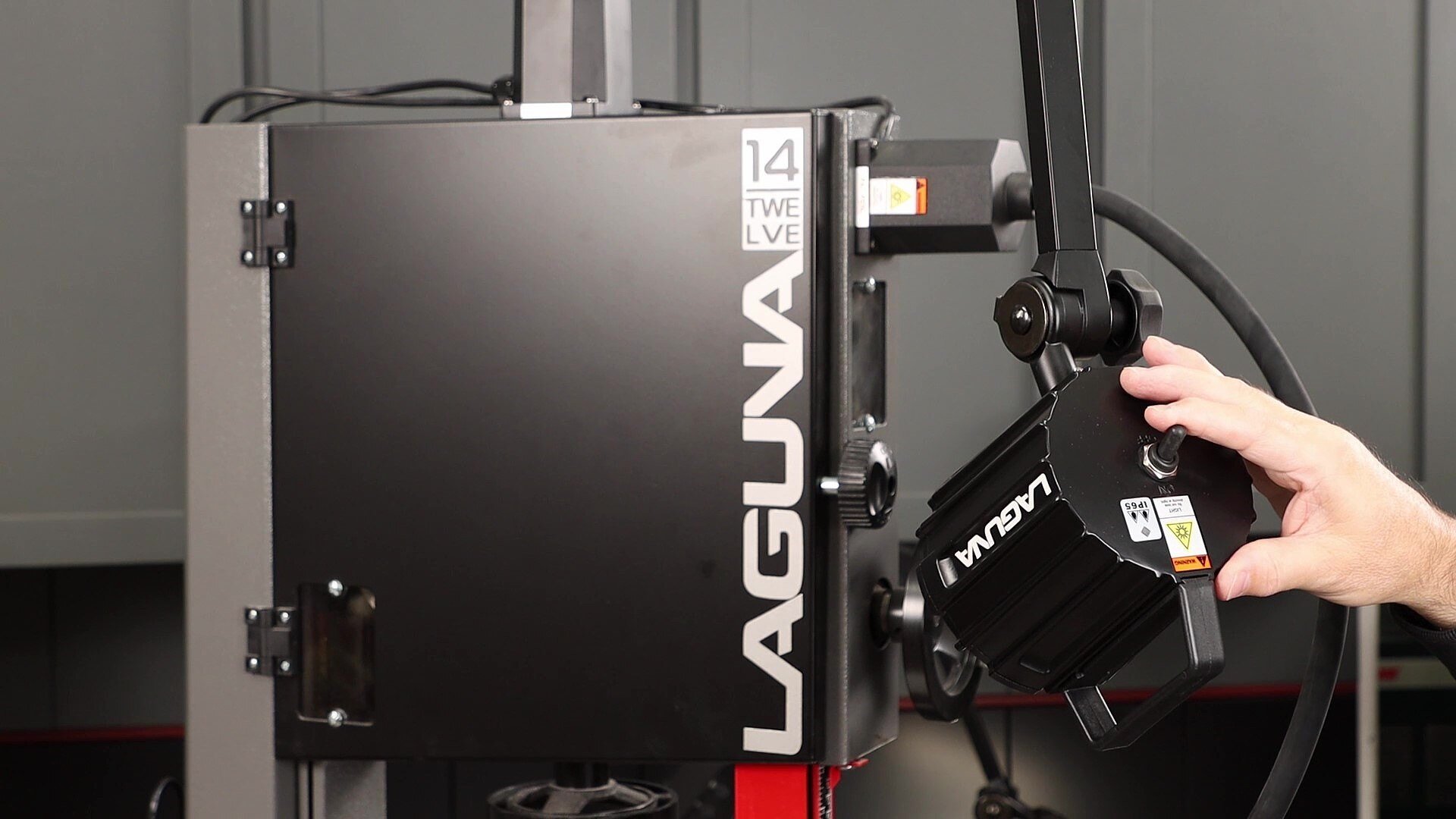If you have any serious woodworking to do, you’ll need an efficient dust collector to keep up with all those chips. But deciding on which model dust collector is no easy task. After all, there are single-stage units and cyclone collectors, with power output ranging from 1hp to 5hp or more. So, let’s take a look at some of the more common dust collector options for small to mid-sized shops, with specific recommendations for effective dust collection on individual tools.
If you’re just getting started in woodworking, and have minimal capital to invest in large stationary tools, consider a small portable dust collector. They’re designed to be moved around the shop from tool-to-tool as needed. The advantage is the small footprint and very manageable overall size. These small single-stage collectors will stow in any corner of the shop when not in use, even if you have a small workspace. However, you will have to sacrifice the cyclone system that helps separate chips and dust from the exhausted airflow, more dust reaches the pleated filter. This means you’ll want to clean the filter more often with single-stage units. Look for products with easy-to-reach filter cleaning paddles to make this task easier.
The second disadvantage of small dust collectors in general - they may not provide the working airflow to handle large planers or drum sanders. Overall, these small portable units are a huge upgrade from a shop vac, and thanks to the 1-micron pleated canister filter, they keep the air much cleaner. Perfect choice for an entry level woodworker looking for a dust collector, that you can find here. 
Stepping up to a two-stage cyclone means the chips and dust are separated out of the airstream before ever reaching the filter. This means the filter stays cleaner longer, with less maintenance. The Laguna C|Flux: 1 produces over 1300 CFM of airflow, allowing you to step up to larger more productive woodworking machines. Suddenly, the volume of chips coming off large planers, and the fine dust produced by drum sanders are no problem in the shop. With all those chips, you’ll want a convenient way to dispose of them. There’s no better system on the market than the iconic hexagonal drum with an innovative lifting system. With the push of a lever, you’ll lift the steel drum off its casters, and make a perfect seal with the cyclone body. A handy sight window shows at a glance when the drum needs to be emptied. This C|Flux is the ideal option for the intermediate woodworker, that you can find here.
Some woodworking tools do pretty well with a typical shop vac. The miter saw is one such tool, and although it won’t provide stellar performance, it will get you by for a while.
Another tool that does moderately well with the high velocity and low volume of a shop vac is a router table. Most other tools in the shop require higher CFM for adequate dust collection.
Even small oscillating sanders need plenty of airflow for adequate dust collection. With many benchtop sanders, the typical 4” hose of a dust collection system is choked down to 2-1/4”. This allows woodworkers without a dust collector to attach a shop vacuum instead, but probably reduces overall dust collection efficiency.
A table saw is one tool that definitely needs a good-sized dust collector with at least a 4” hose. Ideally, avoid a flex hose in the system when possible. Rigid piping is much more efficient than flex hose. Even a 10-foot length of flexible hose in your system can cause a notable drop in performance with smaller collectors.
Even a modest-sized shop will benefit from hard-piping a dust collection system. Keep the piping as large as possible until the runs drop to individual tools. Here, the metal dust collection pipe starts at 6” diameter, and reduces to 5” hard pipe, then finally to a 4” flex hose at the blast gate for the planer. Note the angled “Y” fittings and large-radius sweeping bends for optimal airflow.
Seasoned woodworkers know to run a straight pipe from the collector. A minimum 5’ long straight pipe will decrease turbulence as the chips enter the cyclone. This, in turn, leads to better separation in the system.
If you appreciate all the high-tech features and amenities, check out the P|Flux series with an auto-cleaning filter, LED bin light and sensor, and sound-attenuating construction. Have a cup of coffee and do your own research on what Laguna Tools Dust Collector is perfect for you, check out their line-up here.
Woodworking
Tips & Tricks
Dust Collectors
General
Choosing The Correct Dust Collector
By
Willie Sandry on November, 9 2022

Recommended Articles
- September 3, 2025
- April 30, 2025
- March 12, 2025



